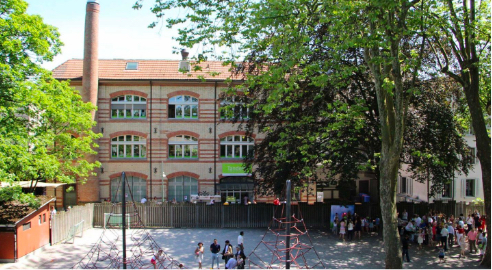Digital outreach is no longer a side project for universities; it’s the first gateway most applicants use to imagine life on campus. A well-built virtual tour puts viewers in familiar hallways, hidden courtyards, and buzzing lecture theatres without asking them to leave home.
Below is a practical, step-by-step look at how to create a virtual tour. We will move from concept to launch, comparing multiple production methods and outlining what each one demands.
Define Goals Before You Film
Every campus has stories. Decide which ones matter most. Undergraduate applicants often care about dorms, sports facilities, and social hubs, while postgraduate audiences tend to weigh laboratories, research libraries, and industry partnerships.
Clarifying these priorities affects camera angles, narration tone, and even the length of each segment. It also determines which method of virtual tour creation fits best.
How to Create a Virtual Tour: Choosing an Approach
There are three dominant formats:
- Interactive 360-degree platforms
- Pre-recorded cinematic tours
- Live university tours
Each path reaches slightly different temperaments. Applicants who love gaming often prefer interactive exploration, while families watching together on a sofa may enjoy a polished film.
Let’s observe all 3 methods more closely.
1. Panoramic Photo Tour Creation

Interactive virtual tour platforms sit at the heart of many self-guided experiences. You upload 360-degree photographs—captured with cameras like the Insta360 ONE RS or Ricoh Theta—and arrange them into a navigable floor plan.
The standout advantage is scale: once the template is ready, adding a newly built auditorium later means inserting one extra scene, not filming an entire sequel.
Preparation tips:
- Storyboarding matters more than scripting. Mark every doorway and staircase you plan to photograph. Viewers will forgive a cloudy sky; they will not forgive getting stuck in a virtual dead end.
- Keep hotspots purposeful. Pop-up windows should deepen context (lab equipment specs, student quotes, or sustainability facts) rather than duplicate brochure lines.
Because images load independently, these tours work smoothly even on modest broadband.
2. Video Walkthroughs

If you decide to make a video, think like a filmmaker, not a marketer. Show morning light washing over stone arches, cut to the bustle of a café five minutes before lectures begin, then let a current student speak over B-roll of their robotics prototype. This rhythm builds narrative momentum.
Essential elements:
- Cinematography: A gimbal stabiliser removes jolts from hallway tracking shots, while a lightweight drone provides aerial context.
- Sound: Use external microphones; built-ins capture shoe squeaks and echo, not confident voices.
- Editing: With any video editor for Windows or Mac, you can keep individual scenes short and add fancy effects.
Although production costs exceed those of static panoramas, a finely crafted film travels well on social media and can double as an open-day opener.
3. Live University Tours

Prospective students crave authenticity, and live streams deliver it in abundance. A guide holding a wireless microphone leads the audience through active labs, pauses while the marching band rehearses, then swivels the lens toward questions typed in chat.
The format is perfect for revealing seasonal life—cherry blossoms in April, snow sculptures in January—without the delay of post-production.
To pull it off:
- A bonded WiFi connection or specific solutions optimized for video streaming can ensure the signal is strong enough to push through the bandwidth required for a smooth stream.
- Rehearse the path but allow for detours; spontaneous interactions with passing students are gold.
- Nominate a backstage moderator to relay chat questions and monitor audio levels.
Expect fewer lingering close-ups than a polished film, but more emotional immediacy.
Hybrid Experiences Tie Everything Together
Increasingly, universities blend formats: an interactive map embeds snippets from the pre-recorded documentary, while scheduled live streams appear as calendar icons visitors can join.
This layered strategy recognises that no two prospects explore alike. Someone might skim dorm photos at midnight, then return next week for a live Q&A with the dean.
Integrating the parts requires a consistent visual language—matching fonts, colours, and logo placements—so the journey feels seamless even as media types change.
Post-Production, Hosting, and Promotion
Editing is where separate clips become storytelling. Balance sweeping establishing shots with tight details—text on a library manuscript or steam curling from a lab espresso machine.
Caption interviews and offer subtitles for non-native audiences. Before export, check contrast on both a phone and a desktop display; many viewers first encounter university tours on mobile devices during lunch breaks.
Hosting options range from embedding on the institution’s site to uploading on YouTube with time-stamped chapters (and Shorts for interesting interactions). Interactive platform vendors often supply secure cloud storage; verify GDPR compliance if you recruit student volunteers on screen.
Promotion should extend beyond an announcement tweet. Admissions officers can attach the link to offer letters, alumni offices can highlight it during fundraising drives, and career services can showcase laboratories when courting research partners.
Conclusion
That’s all you need to know about how to make a virtual tour that welcomes prospects with clarity and warmth.
A virtual walk across campus is more than a marketing asset. It’s a promise of what life will feel like after enrolment.
Whether you rely on stitched panoramas, decide to make a video, or invite viewers into a real-time stroll, hold that promise at the centre of every frame.


